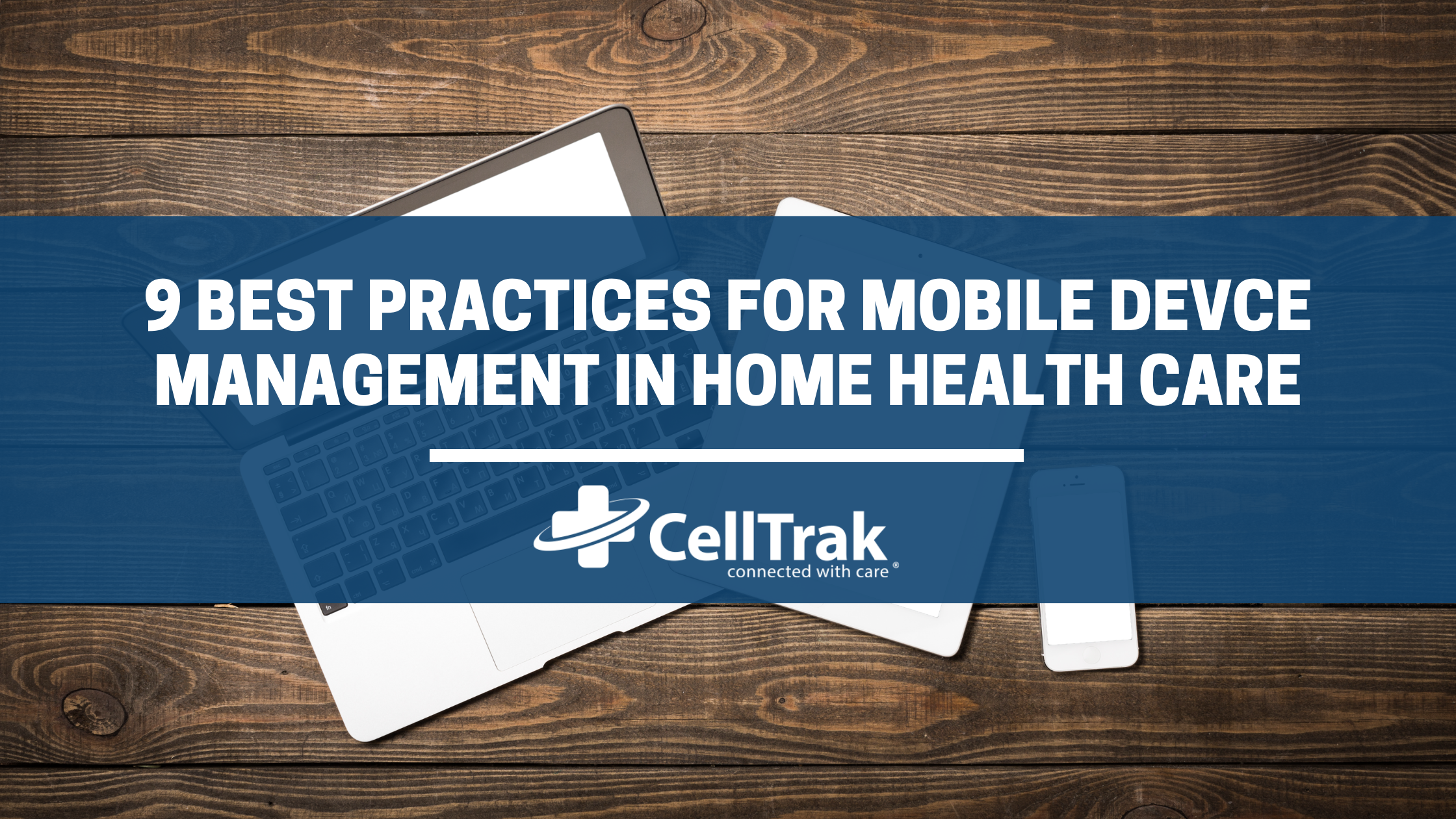9 Best Practices for Mobile Device Management in Home Health Care
As mobile devices become more commonplace in the health care setting, agencies are challenged to secure patient information and ensure compliance with confidentiality regulations.
Establishing a mobile device management (MDM) policy is one way to facilitate this.
In a 2015 HIMSS survey, more than 90% of health care provider employees reported using mobile devices to engage with patients, but only 57% of employees indicated their organizations have a mobile technology policy in place. This is a critical mistake; failure to meet regulations for data privacy and security can result in significant fees and penalties that can dramatically affect agencies both financially and reputationally.
An MDM policy provides the necessary foundation for home care organizations to remotely manage the software, security settings, and usage of mobile devices. It’s also essential for giving workers the appropriate level of access to the applications, data, and networks they need to streamline workflows, increase efficiency, and improve the delivery of care.
The best MDM policies are both clear and comprehensive, to ensure the stated policy is easily followed and enforced. But with so many options and alternative approaches to MDM, this can be easier said than done.
Below, we’ve identified nine best practices that can help home care agencies balance the need to meet evolving compliance requirements against the need for appropriate technology and flexibility.
Implementing a Mobile Device Management Policy
- Ensure device security. Whether devices are protected by passcodes or biometrics, security is critical. Biometrics offer the most protection, but users can also protect devices and the data on them by regularly updating complex passwords. To ensure security, passwords should never be shared with anyone.
- Encrypt transmitted data. Device-level encryption should be implemented that meets or exceeds HIPAA standards. This protects the agency as well as the information that’s being transmitted between devices and through emails, attachments, and text messages.
- Allow for remote management. When a device is reported lost, agencies must be able to remotely disable or clear a device, reducing or eliminating the risk of data breaches.
- Monitor and control application use. Application control helps agencies prevent malicious or unsecured apps from being inadvertently downloaded and compromising the security of devices or data. Agencies may also consider mandating certain performance-enhancing apps and recommending other optional apps.
- Implement real-time reporting. Through MDM solutions, agencies gain insight into such data points as online users, device status, and security compliance.
- Report lost, stolen, or damaged devices. Although devices should always be secured and protected, accidents happen. Employees should immediately contact a supervisor if a device is lost or damaged; the device can then be remotely locked or wiped to ensure client confidentiality.
- Establish regular updates. Keeping devices updated and minimizing operating system vulnerabilities are critical parts of an effective mobile device management strategy. Apps should be automatically updated to the latest versions, ensuring all features are supported and all security settings remain in effect.
- Keep devices safe and clean. Devices should always remain in the owner’s possession and should be protected from extreme weather conditions and exposure to bacteria in the home health setting.
- Avoid using devices in vehicles. Employees should never use mobile devices while driving. In the case of an emergency, employees may use their mobile devices so long as they safely pull over to the side of the road.
Ultimately, implementing an appropriate MDM strategy boils down to being crystal clear on the functionality caregivers, care coordinators, and agency staff need to do their jobs efficiently and effectively – while also being crystal clear on the potential risk points for HIPAA and other data breaches.
With today’s accessible, efficient, and cost-effective mobile technology, home care agencies are better equipped than ever to leverage mobile devices to improve the delivery, management, and quality of care. But agencies must also be aware of the best practices for mobile device strategies, to ensure all mobile communication carries the same level of security as any other form of agency-caregiver-client communication. In doing so, providers can position themselves for success in today’s environment of increased regulation and competition.
If you’re ready to equip your agency with a mobile device management solution and improve the security and compliance of your mobile communication, contact CellTrak today. Our Care Delivery Management Solution puts the tools for success in the palms of your home care workers’ hands.

